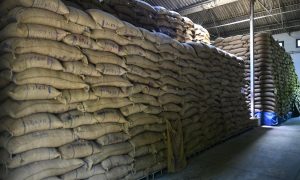Philippine : DA eyes quality shift as imported rice gains ground

Philippine Agriculture Secretary Francisco Tiu Laurel Jr. directed the Rice Industry Development Office to study shifting consumer preferences favoring imported Vietnamese rice. Filipinos increasingly choose soft, fragrant, high-quality grains over quantity, prompting calls for policy adjustments. Studies show local varieties like Rc160 and Rc512 can rival Vietnam’s premium ST25, supporting market alignment efforts.
Agriculture Secretary Francisco P. Tiu Laurel Jr. has instructed the Rice Industry Development Office (RIDO), led by Undersecretary Christopher Morales, to closely examine the apparent shift in Filipino rice preferences, as demand for imported rice—particularly Vietnamese varieties—continues to grow.
Secretary Tiu Laurel said the rising popularity of imported rice could signal a shift in consumer priorities, with more Filipinos possibly choosing quality over quantity—especially in terms of texture, aroma, and overall eating experience—and may warrant a policy response.
Filipino consumers are broadening their rice preferences beyond intermediate amylose varieties to include low-amylose rice, which offers a softer, stickier texture when cooked and has a low gelatinization temperature that enhances digestibility. Despite this shift, there remains a strong preference for long, slender grains and the soft texture of well-cooked rice.
“This trend is worth watching. It may be telling us something important about what Filipino consumers are looking for,” said Tiu Laurel. “It may now be a question of quality over quantity, and that could require a shift in our agricultural policy.”
The directive calls for a comprehensive review of consumer behavior and rice preferences, aiming to generate actionable insights that will help local farmers and millers adapt to evolving market demands, improve grain quality, and even explore export potential.
Usec. Morales said there have already been preliminary studies comparing Vietnamese rice to locally available inbred rice. “I think, in terms of quality, we have the varieties to compete with imported rice—if that is what the market requires,” he said.
Morales cited a recent comparative analysis led by the Rice Chemistry and Food Science Division and Dr. Flordeliza Bordey, Deputy Executive Director for Special Concerns of PhilRice, which evaluated Vietnam’s renowned Soc Trang 25 (ST25) variety against local types. The study showed that several inbred varieties currently distributed under the RCEF program have characteristics similar to the premium Vietnamese ST25. Examples include Rc 218, Rc 160, Rc 480, and Rc 512. Several hybrid rice varieties released by the National Seed Industry Council (NSIC) also compare favorably.
This effort is part of the Masagana Rice Industry Development Program’s initiative to align market preferences with production areas suitable for growing high-quality varieties. It is also being implemented through the OneRicePH Project, funded by the National Rice Program and jointly undertaken by the Philippine Rice Research Institute, University of the Philippines Los Banos, and the International Rice Research Institute.
ST25 was named the world’s best rice in 2019 during the 11th World’s Best Rice Contest held in Manila. It is prized for its long, slender grains; superior taste; fragrant aroma combining pandan and jasmine; short cultivation period (allowing up to three harvests per year); and resistance to salinity and disease.
Vietnam remains the Philippines’ top rice source, accounting for 74 percent of total imports last year. According to the Vietnam Trade Office in Manila, the most popular Vietnamese varieties in the country are DT8 and OM5451.
Thirteen local rice varieties—including Rc 160—offer a potential roadmap for Philippine rice breeders to develop high-yielding, resilient, premium-quality rice that can be produced efficiently under local conditions and compete with foreign imports both in the domestic and international markets.
To Read more about Rice News continue reading Agriinsite.com
Source : Department of Agriculture
















